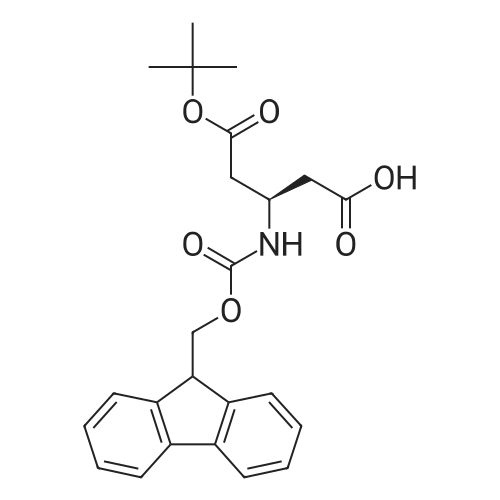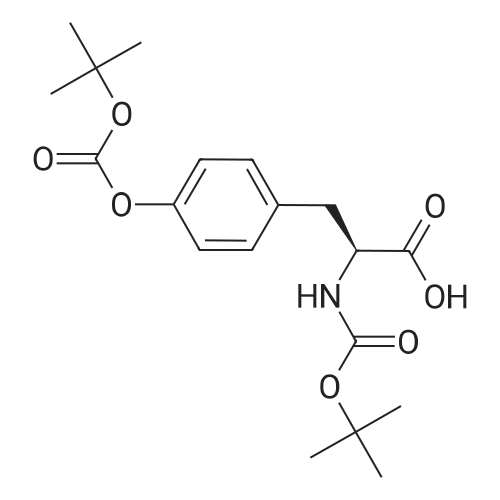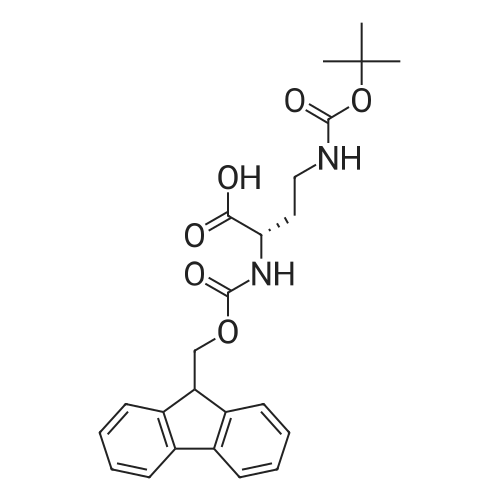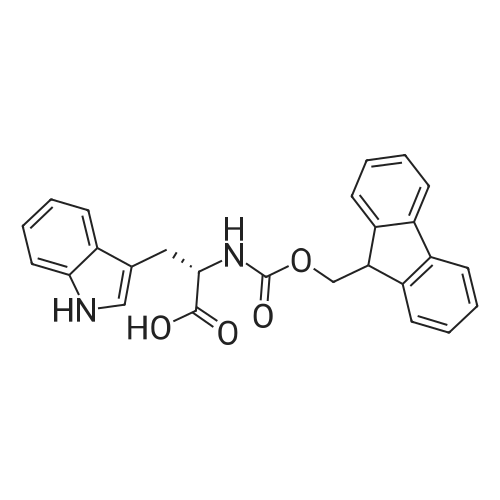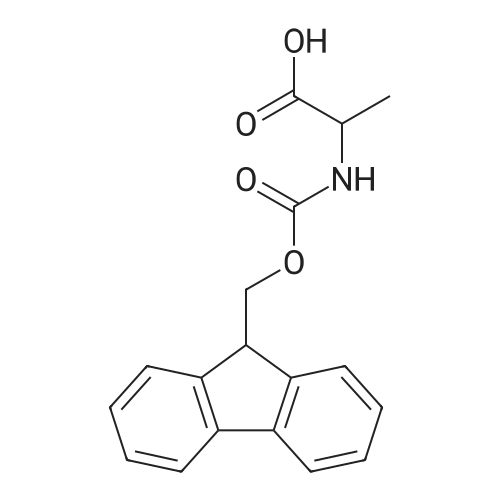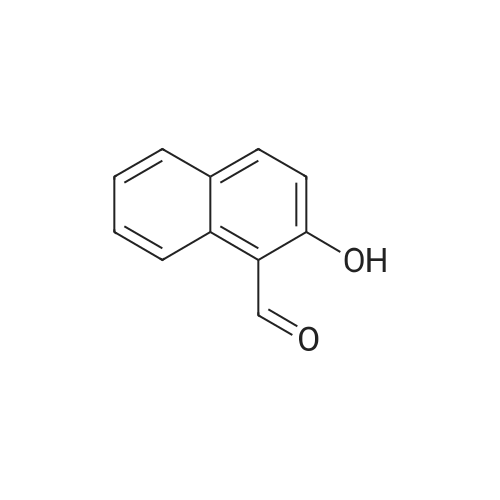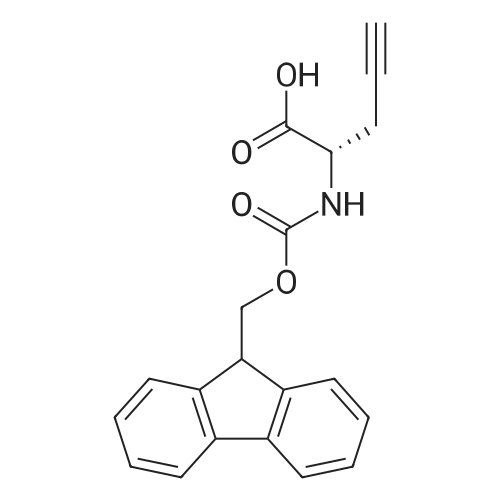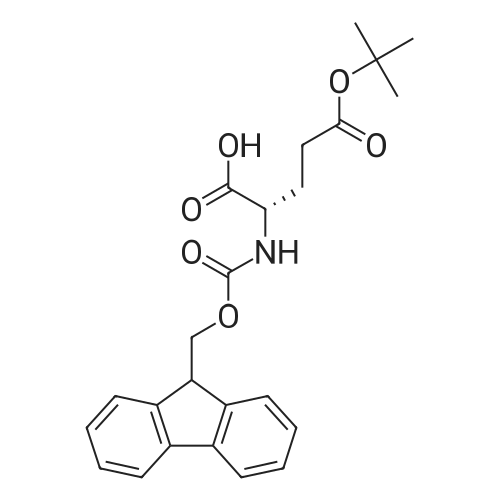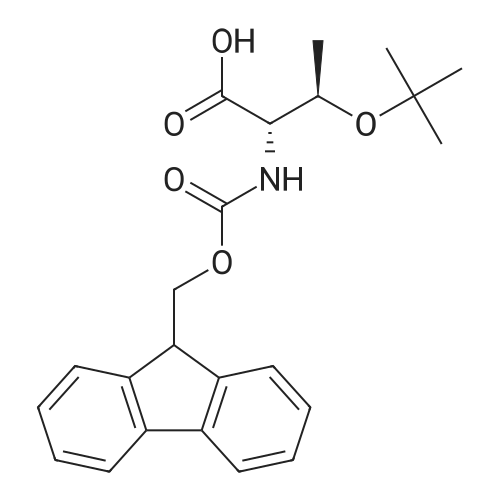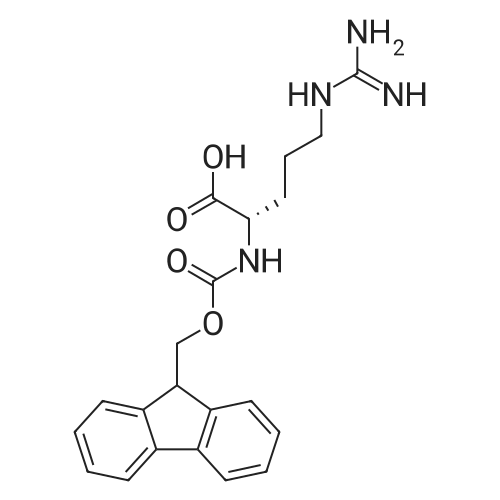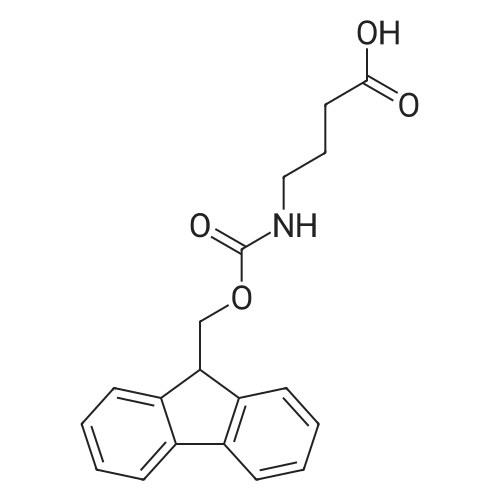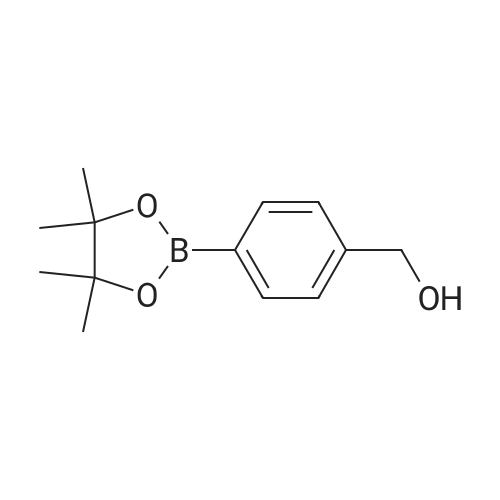|
|
General procedure: Synthesis of NH2-ACC-Rink Amide resin. Preparation of ACC wascarried out as described previously according to Maly et al.18 To glass reactionvessel, 1 eq (6.24 mmol, 13 g) of Rink AM resin was added and stirred gentlyonce per 10 min in DCM for 1 h, and then filtered and washed 3 times with DMF.Fmoc-protecting group was removed using 20percent piperidine in DMF (5, 5, and25 min), filtered each time and washed with DMF (six times). Next, 2.50 eq of Fmoc-ACC-OH (15.6 mmol, 6.9 g) was preactivated with 2.50 eq HOBt monohydrate (15.6 mmol, 2.34 g) and 2.50 eq DICI (15.6 mmol, 2.0 ml) in DMFand mixture was added to the resin. Reaction was stirred gently for 24 h at room temperature. Resin was washed four times with DMF and reaction was repeatedusing 1.5 eq of above reagents to improve yield of ACC coupling to the resin. Afterreaction, resin was washed with DMF and Fmoc group was removed using 20percentpiperidine in DMF (5, 5, and 25 min), filtered and washed with DMF (six times). Synthesis of NH2-Asp(t-Bu)-ACC-Rink Amide resin. Next, 2.5 eqFmoc-Asp(t-Bu)-OH (15.6 mmol, 6.42 g) with 2.5 eq HATU (15.6 mmol, 5.93 g),2.5 eq collidine (15.6 mmol, 2.03 ml) in DMF were activated for 2 min and added tofilter cannula with 1 eq (6.24 mmol) NH2-ACC-resin and reaction was carried outfor 24 h. Next, resin was washed four times with DMF and reaction was repeatedusing 1.5 eq of above reagents. After washing with DMF, Fmoc-protecting groupwas removed using 20percent piperidine in DMF (5, 5, and 25 min). Resin wasadditional washed with DCM (3 times) and MeOH (3 times) and dried over P2O5. Synthesis of individual optimized substrates. The 2.5 eqFmoc-P2-OH was preactivated with 2.5 eq HOBt and 2.5 eq DICI in DMF andadded to cartridge with 1 eq NH2-Asp(t-Bu)-ACC-resin (all substrates containedAsp at P1 position) and followed by gentle agitation for 3 h. Then, it was filteredand washed with DMF (six times). Fmoc-protecting group was removed using 20percent piperidine in DMF (5, 5, and 25 min). Ninhydrin test was carried out each time aftercoupling and deprotection. A solution of 2.5 eq Fmoc-P3-OH, 2.5 eq HOBt, and2.5 eq DICI in DMF was added to the resin and the slurry was agitated for 3 h.After removal of the solution, the resin was washed with DMF (six times), andcoupling and deprotection of Fmoc-P4-OH was carried in identical conditions likeP2 position. N-terminus was protected with acetyl group using 5 eq AcOH, 5 eqHBTU, and 5 eq DIPEA in DMF as previous described. After solvent removal, theresin was washed with DMF (six times), DCM (three times), and MeOH (threetimes) dried over P2O5 and cleaved from the resin with a mixture of TFA/TIPS/H2O(percent, v/v/v 95 : 2.5 : 2.5). The crude product was purified by HPLC and lyophilized.Its purity was confirmed by analytical HPLC. Each optimized substrate wasanalyzed using HRMS. Optimized substrates were dissolved in peptide gradeDMSO to 20mM concentration and stored at -80 °Cuntil use. |

 Chemistry
Chemistry
 Pharmaceutical Intermediates
Pharmaceutical Intermediates
 Inhibitors/Agonists
Inhibitors/Agonists
 Material Science
Material Science













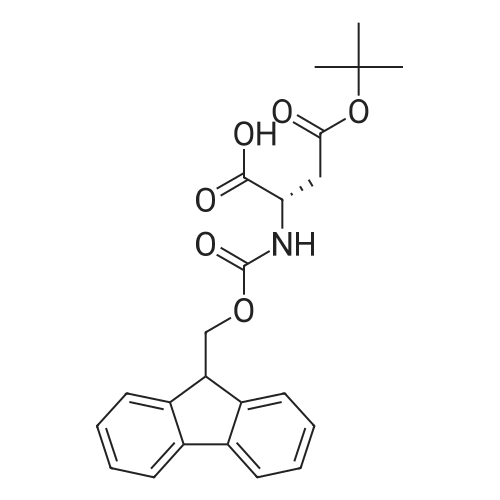

 For Research Only
For Research Only
 120K+ Compounds
120K+ Compounds
 Competitive Price
Competitive Price
 1-2 Day Shipping
1-2 Day Shipping





